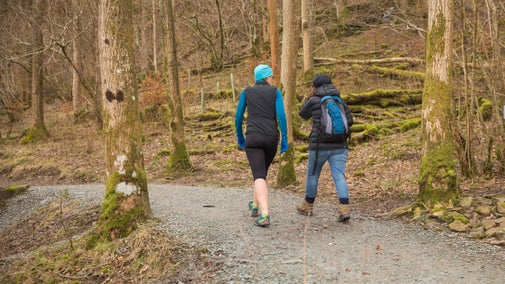Dorothy Wordsworth cycling trail
Lake District
This 32-mile cycling route is from Dorothy Wordsworth's birthplace in Cockermouth to where she died at Rydal Mount near Ambleside in the Lake District, and was created to mark the 250th anniversary of her birth on 25 December 1771. Discover this trail to learn about Dorothy's life, her deep connection to the natural world and how she was a creative force in her own right.
Near to
Wordsworth House and GardenStart point
Wordsworth House and Garden, grid ref: NY118307Trail information
Difficulty*
ChallengingFull trail
DistanceMiles: 32 (km: 51.2)Challenging route
The route is designed for adults who are confident cyclists and not beginners, and is suitable for mountain or hybrid bikes.
More near here
Dorothy Wordsworth walking trail
Mark the life of Dorothy Wordsworth by making the journey from her birthplace in Cockermouth to the place where she died in Rydal.

Wordsworth House countryside walk
A scenic walk through the quiet countryside of the North Lakes starting from Wordsworth House in Cockermouth – birthplace and childhood home of the poet William Wordsworth.

Get in touch
Our partners

We’ve partnered with Cotswold Outdoor to help everyone make the most of their time outdoors in the places we care for.
You might also be interested in
Things to do at Wordsworth House and Garden
Explore Wordsworth House and Garden, the Georgian townhouse which was the birthplace and childhood home of romantic poet William Wordsworth and his sister Dorothy.

Follow the Countryside Code
Help to look after National Trust places by observing a few simple guidelines during your visit and following the Countryside Code.

Staying safe at National Trust places
The special places in National Trust care sometimes come with a few risks for visitors, be it coastline or countryside. Find out how to keep safe throughout your visits.

Cotswold Outdoor: our exclusive walking partner
Learn about the National Trust’s ongoing partnership with Cotswold Outdoor. Find out how they help us care for precious places and the exclusive discount available for National Trust supporters.

Walking in the Lake District
From gentle ambles to more challenging hikes, these are some of the best walks to explore the heart of the Lake District.

Walking
Explore some of the finest landscapes in our care on coastal paths, accessible trails, woodland walks and everything in between. Find the best places to walk near you.


